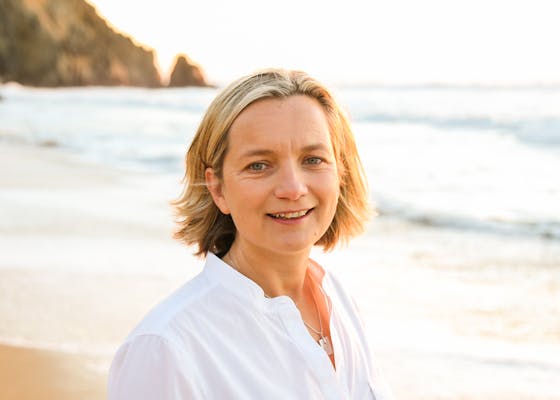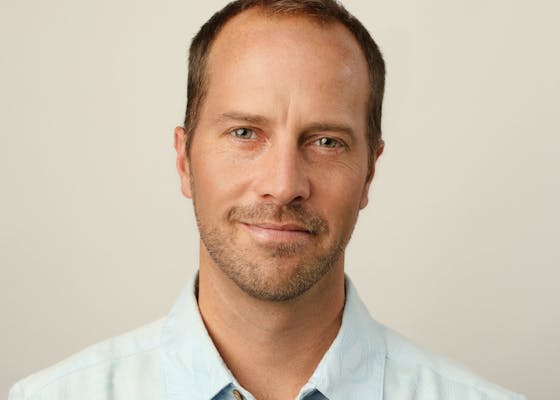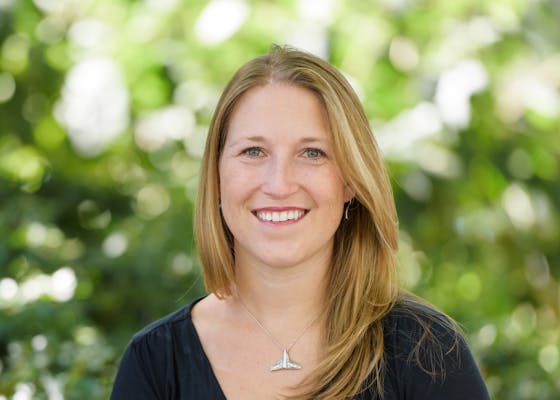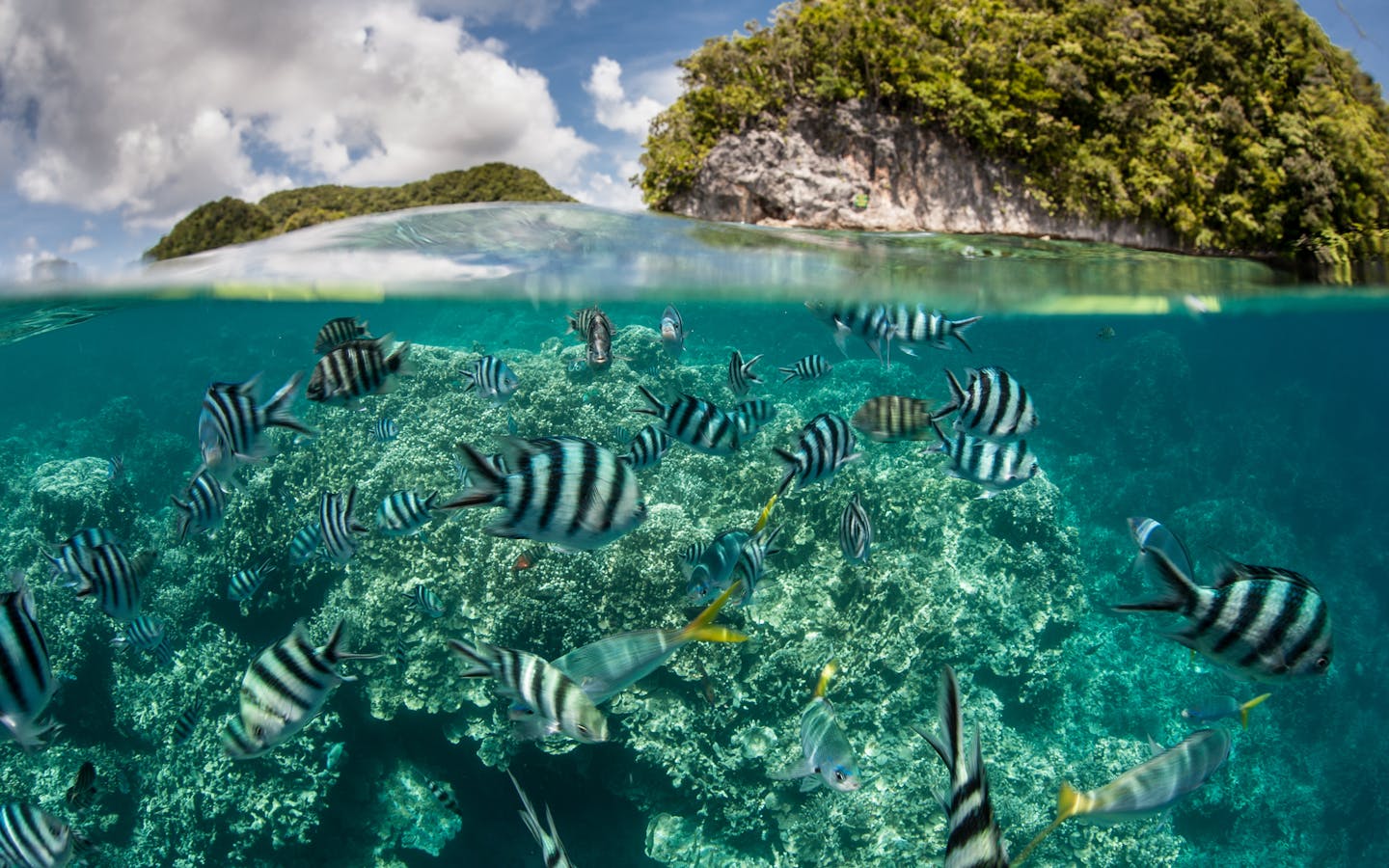From providing food and livelihoods for millions of people, to regulating our planet's climate, oceans are essential to the health and well-being of all life on Earth. However, our growing demand on marine resources is depleting and degrading our oceans — our greatest ally against climate change.
To prevent mass extinctions, maintain ecosystem function and address climate change, at least 30 percent of the world’s ocean must be protected by 2030. Simultaneously, the entire ocean must be sustainably managed to support growing populations and economies, maintain food security and preserve the livelihoods and culture of coastal communities.
Protecting our oceans is a matter of survival, of equity and of climate justice. Now is the time to secure a new future for the world’s oceans — and all who depend on it.
What we do
Conservation International’s Center for Oceans conserves marine biodiversity and ecosystems to protect their ecological, social and economic benefits for people and nature.
We apply science-based approaches and innovative programming to address the most urgent problems, build strong strategic partnerships, and above all, prioritize social equity and the interests of the communities with which we work. Conservation International focuses on three important areas: expanding durable marine protections, promoting sustainable fisheries management and advancing ocean-based solutions to climate adaptation and mitigation.
Historically, these priorities have often been managed separately, by many different organizations — however these challenges require integrated efforts to be effective. We work together with partners to find solutions that cut across traditional barriers and maximize our impact. Our goal is to create lasting change that benefits the health of our oceans and the communities that depend on them.

Protecting marine ecosystems
Approximately 8 percent of the ocean is protected, a level far short of the 30 percent necessary to sustain the ocean’s current benefits for people and the environment. Conservation International is building on lessons from successfully managed marine protected areas worldwide and incorporating the traditional knowledge and needs of Indigenous peoples to expand and strengthen large-scale ocean conservation around the world.

Promoting sustainable seafood production
With 214 million tons of seafood harvested in 2020 alone, global fisheries and aquaculture production is at a record high. To help feed and nourish the world’s growing population, Conservation International promotes sustainable production models that link food security and economic development to the long-term health of fish populations.

Supporting communities' climate resilience
Around 680 million people live in low-lying coastal zones, and that number is expected to increase to a billion by 2050. Conservation International applies practical, science-based approaches to advance climate adaptation and mitigation, bringing together public, private and community partners.
How we do it

Building capacity and supporting local organizations
Conservation International is making critical investments in local partner organizations that are protecting our oceans — in many cases using the direct experiences of local communities and Indigenous people who live closest to nature. We are combining their expertise and knowledge with our own, while supporting local talent and leadership.

Social equity, justice and economic opportunity
Promoting the rights of the people where we work is central to how we design our work and pursue partnership. It’s the right thing to do — and we know it leads to better, more durable outcomes for people and nature.

Partners — big and small, public and private
Working together is the best way to achieve the pace and scale of impact needed. We build and maintain purpose-driven, trusted partnerships with shared goals and complementary approaches.

Integrated program design
Our solutions must be as adaptable and multi-faceted as the problems facing our oceans today. To ensure durable impact, we conduct research and deploy programming that cuts across the traditionally siloed priorities of ocean conservation, sustainable fisheries management, and climate change mitigation and adaptation.

Team members working locally and globally
Our 50+ person team is dedicated to advancing ocean conservation both abroad and in their home countries. Through our hubs in Washington D.C., Hawai‘i, Costa Rica and New Zealand, the Center for Oceans works with a global network of partners to enable strategic program design and the delivery of tangible impacts.
By the numbers
Our Experts
Show:
- Expertise
- Language
- Location

Vice President, Ocean Science and Innovation
Dr. Emily Pidgeon works on developing solutions for coastal and marine adaptation to climate change and on marine based approaches for mitigation through “blue carbon.”

John N. (“Jack”) Kittinger, Ph.D.
Senior Vice President, Center for Sustainable Lands and Waters
As the senior vice president for Conservation International's Center for Sustainable Lands and Waters, Dr. Kittinger works to transform production to regenerative practices — developing new economic models for farming, fishing and fashion.

Senior Vice President, Center for Oceans
Ashleigh McGovern leads multi-disciplinary teams to design and implement nature-based solutions to the complex problems facing our ocean and climate today.

Vice President, Blue Nature within the Center for Oceans and Co-lead of the Blue Nature Alliance
Laure is a marine ecologist and internationally-focused ocean conservation practitioner with two decades of experience. She serves as the vice president of Conservation International’s Blue Nature Program and as the co-lead of the Blue Nature Alliance, a global partnership working to accelerate effective ocean conservation worldwide. Through both roles, Laure leads teams of dedicated ocean conservationists and scientists working directly with communities, governments and investors to catalyze effective, equitable and durable ocean conservation around the world — from coasts to the high seas.




